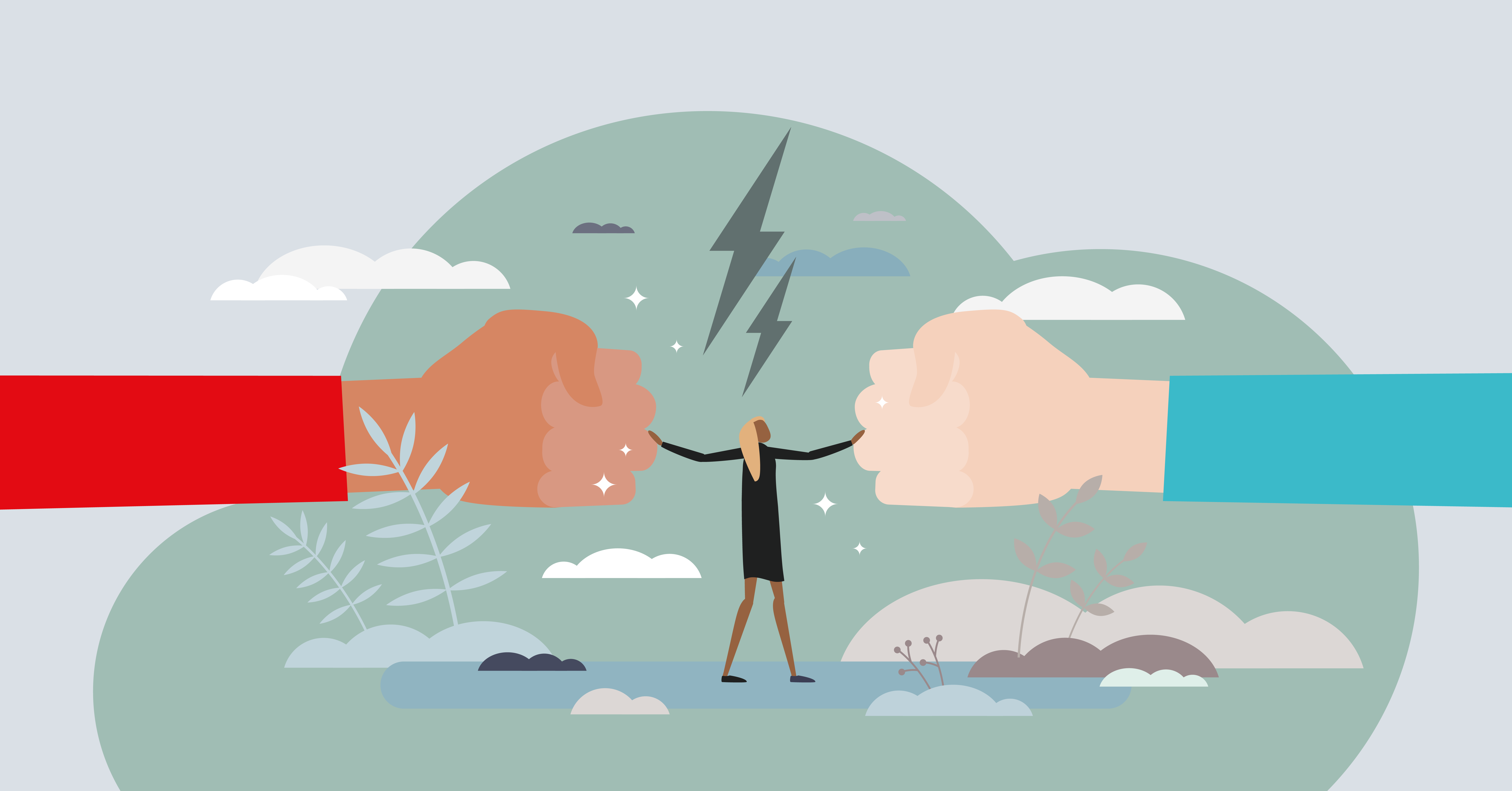
Amsterdam – Divers & Inclusive speaks to companies and organisations about diversity and inclusion in the city. In this article, the Beterburen Foundation shares its expertise in conflict mediation. At Beterburen, mediation is all about eliminating or solving a particular problem between neighbours by creating or restoring good communication. Beterburen talks about their conflict mediation and gives some concrete advice on how to go about this yourself in the workplace.
The only time you really have communication is when two people speak the language equally well or equally poorly – Margaret Mead
What does Beterburen do?
If neighbours are experiencing nuisance from each other, they can get free mediation in an approachable and informal way through us. We do this with the selfless commitment of some 260 trained neighbourhood mediators.
How does conflict usually arise?
What we see is that most conflicts are about what happens on the surface. There is a lack of good communication. Whether at work or at home, the ‘real problem’ is usually not that one wrong comment or that unfulfilled agreement. The real problem is non- or miscommunication, unspoken and bottled-up irritations, the feeling of not being respected or all kinds of assumptions. For example, consider neighbour (B1) who sings and plays music during the day which prevents his neighbour (B2) from sleeping. B2 complains about the noise and yells and bangs on the ceiling, while B1 doesn’t understand why B2 has to sleep during the day. He thinks he is just a slacker and poser. By having them talk to each other, they find out that B2 sleeps during the day because he works in care at night. Through the understanding that can then develop, they come to a solution more easily. People pot up their irritations, stick with it and then the feeling of injustice and misunderstanding gets bigger and worse. It is best to create mutual understanding first. Because if you don’t address the underlying issues, a new conflict will present itself in no time.
How do you resolve conflict?
As mentioned, our mediators focus on restoring communication. We ask both parties: what do you want to achieve together? Mediation is about restoring good communication so that there is an understanding of each other’s situation. Mediators provide a safe environment where neighbours can tell their story to each other and where wishes and needs are discussed. This is how you work towards a win-win situation. It is essential that those involved make their own agreements and retain ownership of the situation and the solution. If we impose a solution as an outsider, you don’t know whether people will really agree and commit to it.
What is the role of cultural differences when it comes to conflict (mediation)?
Communicating well is already difficult when you speak the same language and come from the same culture! Cultural differences can add another layer of confusion or misunderstanding. Indeed, a difference in culture or outlook can lead to initial misunderstanding or making assumptions. But if you connect from person to person, it turns out that besides differences, you also have (many) similarities and can learn from each other. Conflict is just as common between people from the same culture, so I would not say that cultural differences necessarily lead to conflict more often.
How can employees and employers apply your insights in the workplace?
Stay curious and open to each other. Don’t think you know how the other person thinks about something or why they do what they do, but engage in the conversation. Ask, listen and share with each other. You don’t have to come to the same opinion, but you can respect each other and look for the connection. Then you may also feel less of a need to convince the other, which in turn helps you listen to each other better. Various studies have shown that a diverse and inclusive composition of a team leads to better results. It is precisely the different experiences and knowledge that produce a more solid result.
Concrete advice on how to have a conversation to reach a solution:
- Put yourself in the other person’s shoes We are all different people with different opinions, backgrounds and behaviours. This thought is sometimes difficult to hold while discussing a problem. Seeing things from the other side every now and then and giving the other person space will create room for greater understanding.
- Be specific In the conversation, it is important to come across clearly and lucidly. Explain what bothers you, when it happens and what it does to you. Describe what you want, when you need it and why it is important to you.
- Give and take It is important to listen to each other and try to understand each other’s motivations and desires. This gives everyone a more complete picture of the situation. Based on this knowledge, you can make proposals to solve the problem. (“I would like no noise between 10 and 12 because of my baby’s morning nap and then I will accept that you do your workout between 8 and 9 in the morning.”)
- Negotiate Negotiate means that both seek the most acceptable solution with proposals put forward. People have their own motivations for doing what they do and wanting what they want. You both have your own visions and ideas. With these, you can suggest something that could solve the problem. In this way, the conversation looks for the best solution.
- Ask what exactly is meant Sometimes comments from another person come across as harsh. This can feel like criticism. Often, the comment can be traced back to behaviour and not to you as a person. Ask the other person what exactly is meant. Criticism that really focuses on the person makes no sense and only takes you further from the goal of reaching a solution.
- Work together to find a solution Don’t get stuck on the problem. Focus on the solution. No one is served if the problem persists. Not even if you have been proven right. See solving the problem as a joint task.
